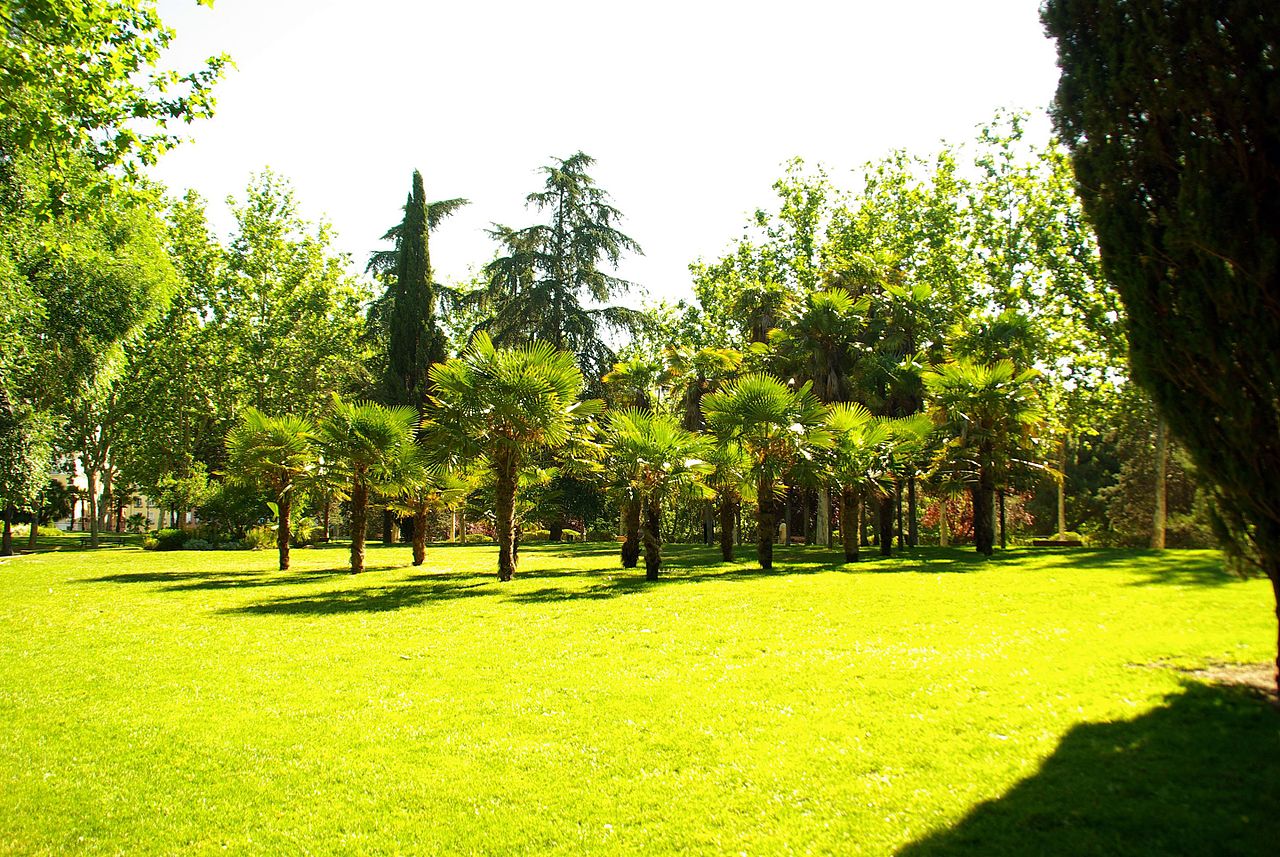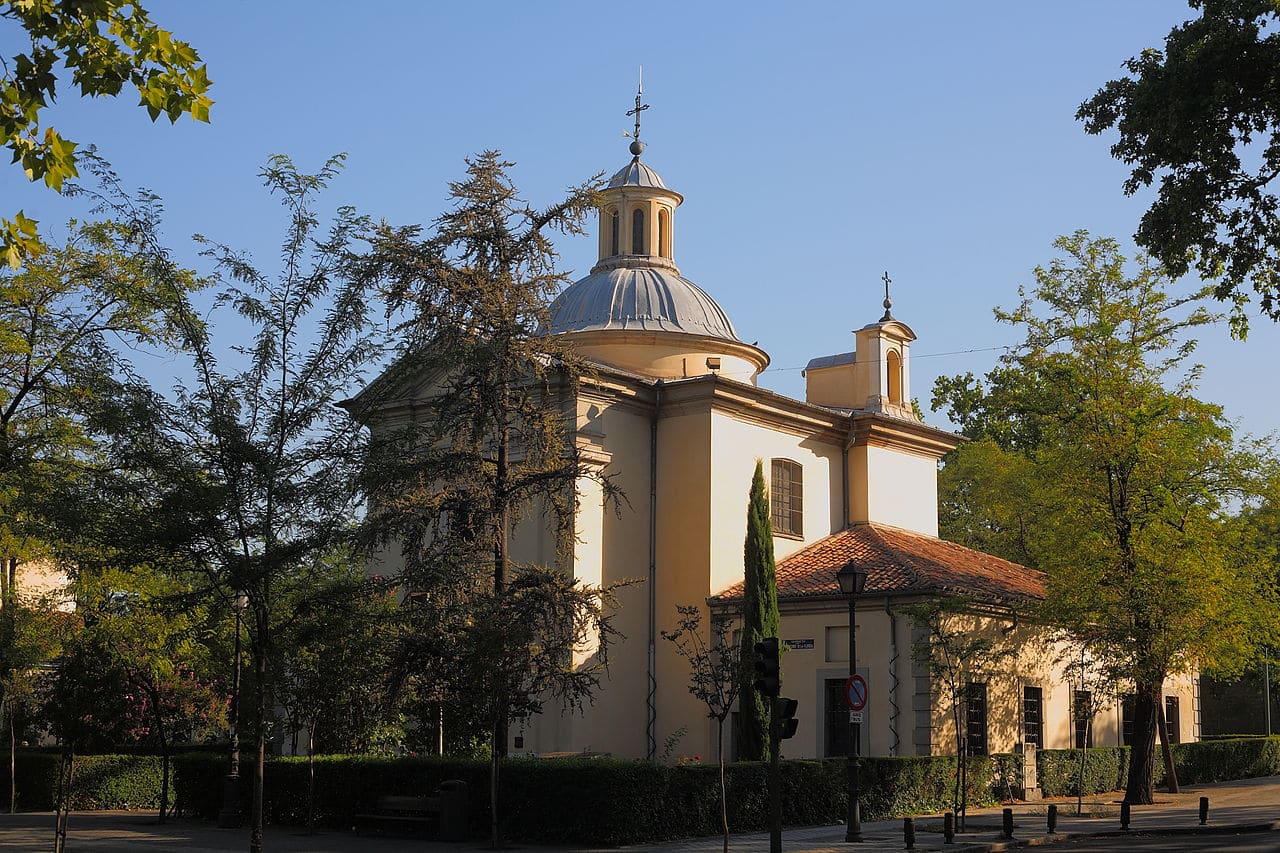
El West Park in Madrid It is one of the lungs of the capital of Spain. It is located in the district of Moncloa-Aravaca, to the northwest of the city and occupies an approximate area of one hundred hectares.
It is framed by Avenida de Séneca to the north, Paseo Pintor Rosales to the east, Avenida de Valladolid to the west and Calle de Irún to the south. They serve to articulate its interior walks of Camoens and Ruperto ChapíAs well as Francisco and Jacinto Alcántara and La Rosaleda streets. Since it comes, next to the nearby House, from the true garden of the northern neighborhoods of the capital, we are going to explain everything you need to know about Parque del Oeste in Madrid.
Brief history of Parque del Oeste in Madrid

View of Parque del Oeste in Madrid
Before the creation of this wonderful park, the area where it is located was used as a garbage dump for the city. A first phase of urbanization was developed from 1893 with the design of the landscaper abraham pedraza. But the most important part of this green space was due to the mayor Alberto Aguilera.
He commissioned the final creation of the park to Celedonio Rodriguez, agricultural engineer who worked as head of gardens and parks of the City Council. So he came to the Mountain Barracks, which no longer exists today and has been replaced by the Temple of Debod, which we will talk about later.
During the Civil War, the park became the scene of battles and was destroyed. For this reason, once the conflict was over, the municipal park manager, this time Cecilio Rodriguez, undertook its restoration. For her, he respected the landscaping style given to him by her predecessors.
Later, the park also occupied the land that had housed the aforementioned barracks. An auxiliary park was built there and the Ramon Ortiz rose garden. The latter has an area of fifteen thousand square meters and every year since 1956 houses the International Contest of New Roses of the Villa de Madrid.
Park description and services

One of the bunkers in Parque del Oeste
West Park in Madrid It has a character monumental and landscape. In general, it responds to the style of english garden To which is added steep slopes and curved paths that are inspired by naturalistic currents. It also has the most common services in this type of space. These include paid parking, a sports and race circuit, a picnic area, a restaurant area and even a botanical trail.
On the other hand, in the area between Paseo Ruperto Chapí and Avenida de Séneca, you can still see precisely three Civil War machine gun bunkers. Also, very close you have a stream of approximately six hundred meters in length on whose banks there is a beautiful path.
How to get to Parque del Oeste

Principe Pio station
As we have already told you, the Parque del Oeste in Madrid is to the north of the city. Therefore, you can get to it in your own vehicle. In fact, the M-30 passes very close. But, if you prefer, you have public means of transport to get closer to this beautiful green area.
You can choose the bus. Some of the lines with stops around the park are the one, the 21, the 44, the 82, the 161 or the A, C1, C2, G, U and N28. But you can also use the suburban railway, specifically the one from Prince Pio. However, we advise you to choose the subway. The stations around the park are, precisely, Principe Pío, Moncloa and Plaza de España.
On the other hand, in the areas of Paseo de Moret and Calle Arcipreste de Hita, you have bike rental service to move around the area. Finally, we want to point out that the wonderful Ramón Ortiz Rose Garden, which we have already told you about, is only open between 10 am and 18 pm in winter and 10 am and 21 pm in summer. And this brings us to the topic of what to see in the Parque del Oeste in Madrid.
What to see in the Parque del Oeste in Madrid

Monument to Simón Bolívar in Parque del Oeste
This wonderful green area allows you to practice sports and breathe fresh air. But it also has other attractions. We have already mentioned the rose garden and the bunkers from the Civil War. However, you have many other things to see. For example, the many statues that adorn it. Between them, the monuments to the infanta Isabel, Concepción Arenal or Simón Bolívar. Equally spectacular is the fountain of Juan de Villanueva, which, as a tribute, imitates the style of this great neoclassical architect. But, even more interesting is what we are going to show you next.
The cable car

Cable car between Casa de Campo and Parque del Oeste
join the Rosales Painter Walk, already mentioned, with the nearby House, more specifically, with the Garabitas hill. It has eighty cabins with capacity for seven people and, along its route, it offers you Magnificent views of the Manzanares River, the hermitage of San Antonio de la Florida and the entire north of Madrid in general.
The cable car was inaugurated in 1969 and covers a distance of almost two and a half kilometers at a maximum height of forty meters. In total, it takes eleven minutes to complete the journey and, throughout its history, it has been used by millions of people. Likewise, at the Paseo de Rosales terminal you have a restaurant and a car park.
Temple of Debod

The Temple of Debod, an outstanding monument in Parque del Oeste
All in all, perhaps the greatest monumental attraction of Parque del Oeste is the Temple of Debod. It was given to Spain by the Egyptian government in gratitude for the help given, precisely, to save the nubian temples, who were in danger due to the construction of the Aswan dam.
He arrived in our country in 1968 and settled in the park, near the Plaza of Spain, in the area occupied by the Cuartel de la Montaña. To do so, he respected the orientation that he had in his country, that is, from east to west. But more difficult was its transfer and reconstruction. Because he was completely disassembled to store it. There were more than two thousand pieces and the Egyptian experts only delivered an elevation plan and some photos to their Spanish colleagues. These, led by Martin AlmagroThey had to do a lot of work. Even the numbering of some blocks had been lost. Therefore, they followed the technique called anastylosis. It consists of placing the stones in their original form and, where there are doubts, putting them in a different color to differentiate the old from the new.
Finally, the monument was inaugurated in 1972. It is a temple with more than two thousand years old. It was built by order of the Nubian king Adijalamani of Meroe as a tribute to the god Amon of Debod. This part is known as Chapel of the Reliefs for the inscriptions it houses. Already in Ptolemaic times, the temple was enlarged giving more importance to Isis.
Also the Romans, upon their arrival in Egypt, added more parts to it in order to dedicate it to their own divinities. Thus, the temple, as we can see it today, has several buildings. We have already mentioned the Chapel of the Reliefs or Adijalamani, which is located in the main building. In this same there other chapels such as the Osiríaca and also rooms like the wabet, where the priests were purified, and the Mammisi, consecrated to the mystery of the birth of the god.
Likewise, the construction has other two exempt parts. They are called pylons. One of them is from the Ptolemaic period and houses hieroglyphic inscriptions, while the other is Roman from the XNUMXst century BC. On the other hand, on the terrace of the main building, you have a small museum dedicated to the history of the temple in particular and of nubian in a broad sense.
Other buildings in the park

One of the hermitages of San Antonio de la Florida
You can also see in the Parque del Oeste in Madrid other buildings such as the Rosales Pavilion and the one that houses the Francisco Alcantara School of Art. But much more important are the hermitages of San Antonio de la Florida (they are two twin constructions). These are not exactly in the park, but in its southeast exit. Although there were two previous temples, the ones we know today are due to the design of the Italian architect Philip Fontana at the end of the XNUMXth century.
They therefore respond to neoclassical canons and have a Greek cross plan. Likewise, they have a dome with a lantern (open tubular finish to let in light). But perhaps more importantly, the interior of one of them is decorated with frescoes by Francisco de Goya, who represented religious scenes for the occasion along with other costumbristas. Because even then pilgrimages were held in the area, a custom that has not been lost, since, every June 13, the festival of San Antonio de la Florida.
In conclusion, we have shown you everything you need to know about the West Park in Madrid. It only remains for us to advise you that, if you are going to meet him, you should also take the opportunity to visit the nearby House, where is the Theme park. And, above all, to see others Madrid monuments that are close like the precious Almudena Cathedral and Royal Palace with its spectacular Sabatini Gardens. Dare to enjoy these wonders and tell us about your experience.